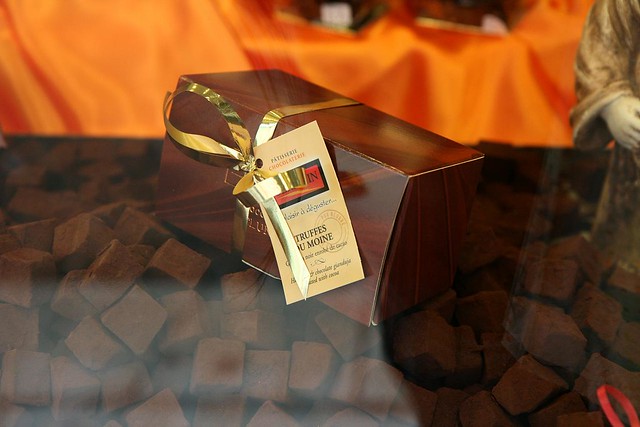Greetings from Mâcon (rhymes with bacon), a fairly nondescript town on the River Sâone in southern Burgundy. We're staying in the Novotel Mâcon Nord, which is just off the A6 freeway. This location means there isn't anything of interest nearby, but it is convenient for making our day trips.
The weather has continued not to cooperate with our photography plans, but yesterday we visited some churches anyway.
Beauty and Disappointment at Berzé-la-Ville

We started off at a small chapel in Berzé-la-Ville, whose claim to fame is a wall of beautiful 12th-century frescoes painted by Italian artists. It seemed like a perfect solution to the rainy weather, since it's only a short drive from Mâcon and the good stuff is inside. But when we arrived at the chapel, our high spirits were dashed when we learned that photography is not allowed inside. And the chapel is so tiny and watched over from the ticket desk (where they charge €3 admission) that there's no chance of getting away with anything. We were so disappointed - it would be wonderful to see the details closer up with our zoom lens and share the beauty with you. At least we got to enjoy the frescoes in person, which really were spectacular, but we didn't stay long because there isn't a whole lot to see.

Near the same village was a very nice chateau on a hill.
Cluny
Having come away mostly empty-handed from our first church, we decided to continue on to Cluny Abbey, only 13km further down the road. The countryside along the way was gorgeous even in the rain, and we ended up getting some really spectacular evening light in Cluny. So despite an inauspicious beginning it turned out to be a really great day.
In medieval times, the Abbey of Cluny was one of the most powerful in France. Its church, begun in 1088, was the largest in the world for several hundred years (until St. Peter's Basilica was rebuilt in the 1500s). Unfortunately almost all of it was destroyed after the French Revolution, and all that stands today is one transept. But the transept is huge and has its own great tower, so it gives a good idea of how big the church was. The foundations of the rest of the church are mostly buried under houses, but one part was cleared away in the 1980s. Restorations and excavations are still going on today.

The transept tower still dominates the town, so it's easy to find. But you can't just walk right up to it. First you have to buy tickets (€6.50) rather far away, in an old abbot's palace near where the church's west front would have been. Then you follow a self-guided tour that winds its way through the ruins and the town, goes through the great transept, and ends up on the other side among various monastic buildings. The foundations of the nave are outside, so you could tour that part for free.

Start of the tour, looking down to where the front of the church once stood. The big west facade, which had two square towers, stood where the two stone houses are now. Behind that, to the left of the surviving towers was a huge central tower, and there was another transept just like this one on the left. So there was a row of five big towers across the center, which must have been quite a sight!

Similar view an hour later, when the sunlight made a brief but dramatic appearance against the stormy sky.

Closer look at the great south transept and its towers.

Down among the foundations. We're not even in the nave yet - this was the site of a very large porch. The nave began about where the wall is on the left, and stretched all the way past the transept.

Seen also in the previous photo, this is an abbot's palace. The top level is Gothic, dating from the 1330s, but the lower parts were rebuilt in the 1800s.

The tour goes through the palace and emerges into some pretty cloisters, which were built around 1750 to replace the earlier Romanesque cloisters.

Up close and personal with the transept.

View underneath the transept tower. The ceiling is incredibly high for a Romanesque church!

The tour ends in this attractive building, which was used to store flour. The gorgeous wooden ceiling dates from the 1200s. Displayed in the back are the few surviving capitals from the Romanesque church.

The capitals depict some of the usual subjects like Adam and Eve and Abraham and Isaac, but a few of the themes are more fancy-pants, reflecting the sophistication of Cluny Abbey. This one is a personification of the third tone in plainsong. Other capitals depicted the Virtues and the Liberal Arts.

After a brief stop in the abbey bookshop, and then at a chocolate shop for a little bag of "Monks' Truffles"...

we went out the way we came in, just in time for the pretty light.